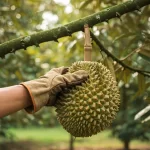
Hollowroot (Corydalis cava) is a captivating perennial flower prized by gardeners for its delicate, trumpet-shaped blooms and attractive fern-like foliage. These charming plants bring a touch of elegance to shaded areas, carpeting the ground with vibrant color during the spring and early summer months. While their beauty is undeniable, Hollowroot also boasts a reputation for being easy to grow and relatively low-maintenance.
This comprehensive guide delves into everything you need to know to cultivate thriving Hollowroot in your garden. We’ll explore ideal growing conditions, proper planting techniques, essential care requirements, and tips for ensuring these delightful flowers flourish season after after season.
Choosing the Perfect Location for Your Hollowroot
Hollowroot thrives in locations that mimic its natural woodland habitat. Here are some key factors to consider when selecting a planting site:
- Light: Hollowroot prefers dappled shade or partial sun. Avoid placing them in areas that receive full sun, especially during the hottest parts of the day. Intense sunlight can scorch the foliage and hinder flowering.
- Soil: These adaptable plants perform well in a variety of well-drained soil types. However, they favor moist, fertile soil with a slightly acidic to neutral pH level. If your soil is heavy clay, amending it with sand or loam will improve drainage.
Planting Hollowroot: A Recipe for Success
There are two primary methods for propagating Hollowroot: planting tubers or sowing seeds.
Planting Tubers:
- The ideal time to plant tubers is during the spring (after the last frost), summer, or fall.
- Prepare the planting site by digging holes approximately 2-3 inches deep and spacing them 6-8 inches apart.
- Carefully place the tubers in the holes with the “eyes” facing upwards.
- Backfill the holes with soil and water thoroughly.
Sowing Seeds:
- Sow seeds directly outdoors in a prepared seedbed during the fall.
- Lightly cover the seeds with a thin layer of soil and keep the area consistently moist.
- Seeds can take several weeks to germinate. Thin out seedlings once they reach a manageable size.
Essential Care for Thriving Hollowroot
Once established, caring for Hollowroot is a breeze. Here are some key practices to keep your plants flourishing:
- Watering: Maintain consistent soil moisture throughout the growing season. Aim for deep watering when the top inch of soil dries out. Avoid overwatering, which can lead to root rot.
- Fertilizing: Apply a balanced or phosphorus-rich fertilizer bi-weekly during the growing season, diluted to half the recommended strength.
- Mulching: A layer of organic mulch around the base of the plants helps retain moisture, regulate soil temperature, and suppress weeds.
- Deadheading: Regularly deadheading spent flowers encourages continued blooming throughout the season.
Nurturing Your Hollowroot Through the Seasons
While Hollowroot is generally considered a low-maintenance plant, there are a few seasonal considerations to keep in mind:
- Spring: The arrival of spring brings a burst of vibrant blooms. Continue regular watering and fertilizing during this active growth period.
- Summer: During hot, dry spells, you may need to increase watering frequency to prevent the soil from drying out completely.
- Fall: As the flowering period wanes, you can reduce watering and fertilizing. Consider applying a light layer of mulch around the base of the plants before winter arrives.
- Winter: Hollowroot is a hardy perennial and can withstand cold temperatures. However, in particularly cold climates, you may want to provide additional winter protection by applying a thicker layer of mulch around the base of the plants.
Troubleshooting Common Hollowroot Issues
While Hollowroot is generally a problem-free plant, a few occasional issues can arise.
- Slugs and Snails: These pests can damage the foliage of Hollowroot. Handpicking or using organic slug and snail control methods can help manage populations
- Fungal Diseases: Fungal diseases such as powdery mildew can affect Hollowroot in conditions with poor air circulation or excessive moisture. Improve air circulation by thinning overcrowded plants and avoid overwatering. In severe cases, a fungicide may be necessary.
Companion Planting for a Thriving Ecosystem
Hollowroot can be effectively integrated into various garden designs. Here are some suggestions for harmonious companion plants:
- Spring Bulbs: Early blooming bulbs like daffodils and tulips can add a burst of color before the Hollowroot foliage emerges.
- Hostas: Hostas, with their large, shade-loving foliage, create a lush backdrop for the delicate blooms of Hollowroot.
- Ferns: Ferns, another shade-loving favorite, complement the fern-like foliage of Hollowroot and add further textural interest to the garden.
Propagating Hollowroot: Sharing the Beauty
There are two primary methods for propagating Hollowroot: division and seed saving.
- Division: The best time to divide Hollowroot is during the fall or early spring when the plants are dormant. Carefully dig up the mature clump and use a sharp knife to divide it into sections, each containing several healthy tubers. Replant the divisions immediately in prepared locations.
- Seed Saving: Allow a few flower heads to go to seed at the end of the blooming season. Once the seed pods dry and begin to split open, collect the mature seeds. Store them in a cool, dry location until fall, when you can sow them directly outdoors in a prepared seedbed.
Conclusion: Cultivating a Tapestry of Beauty with Hollowroot
Hollowroot, with its delicate charm and low-maintenance requirements, is a valuable addition to any shade garden. By following the tips outlined in this comprehensive guide, you can cultivate a thriving colony of these captivating flowers, adding a touch of elegance and vibrant color to your landscape throughout the spring and early summer months.
Remember, with a little care and attention, you can transform your garden into a haven for these enchanting blooms, creating a tapestry of beauty that will bring you joy for seasons to come.







